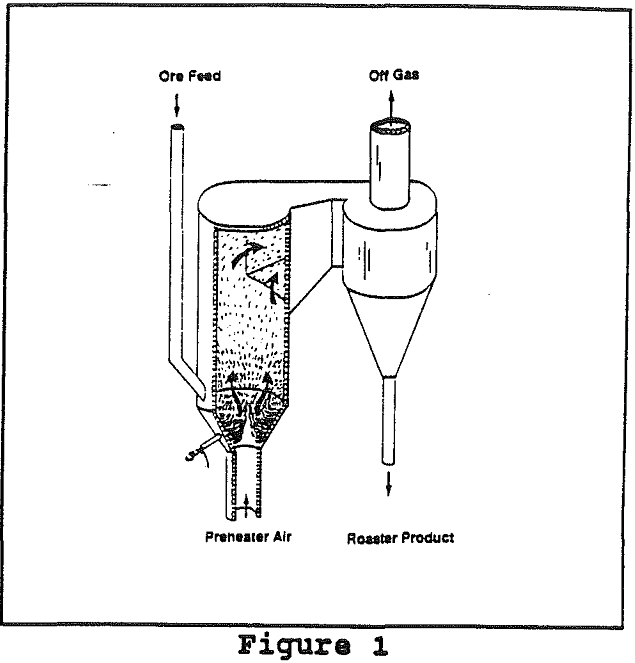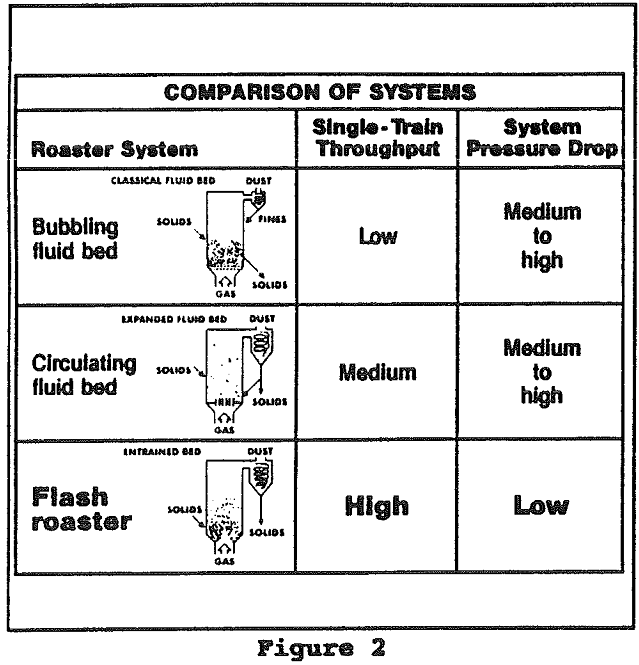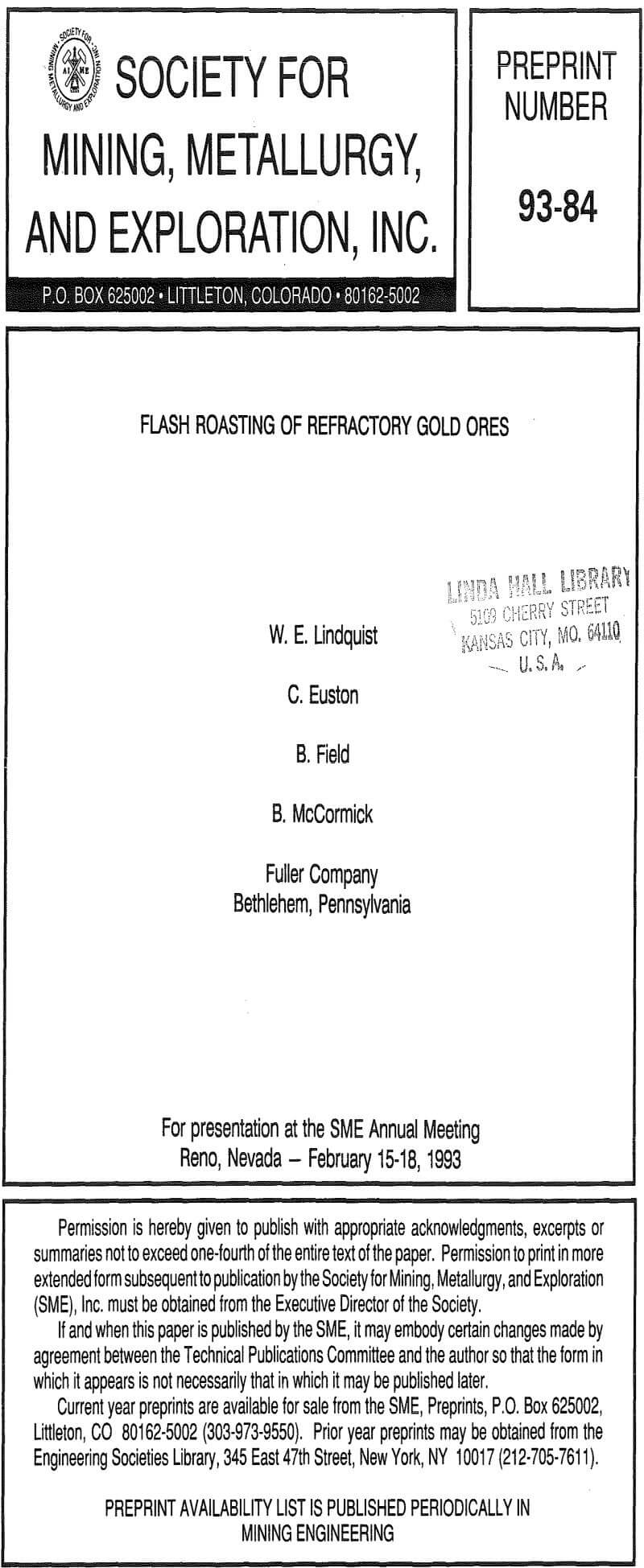Roasting of refractory gold ores has the primary goal of oxidizing sulfides and organics to improve gold recoveries prior to leaching. Commercial installations currently utilize bubbling and circulating fluidized beds. The principle of flash roasting is aimed at a more cost effective method of whole ore roasting for large throughput applications. Results of pilot plant testing and scale up to commercial design will be discussed in further detail in this paper.
Refractory gold ore is generally defined as ore containing gold, which cannot be recovered by basic gravity concentration, or by simple cyanidation. Oxidized ores have been processed by these more straight forward methods. However, as oxidized ore deposits are diminishing in occurrence, refractory ores have risen in importance. Refractory gold ores are typically pyritic, arsenopyritic, and carbonaceous. The gold is present as the metal, and as very fine particles locked in the host minerals.

The goal of refractory gold ore roasting is the oxidation of iron sulfides and carbonaceous matter. Additionally, the roast should not destroy the porosity of the ore structure and access of the leach to the interstitial gold. Iron pyrite, FeS2, breaks down thermally to pyrrhotite, giving off gaseous sulfur.

The key variables in pilot flash roaster testing are temperature, oxygen concentration, and ore size. Preheated air is supplied by fuel combustion in the air heater chamber. The flash roaster is controlled by monitoring the exit temperature from the roaster. The suspension flash roaster provides for full dispersion of the ore particles immediately upon their entry into the process gas stream, and in turn insures very high heat transfer and process reaction rates.
The effective operating temperature range is fairly narrow, with an optimum flash roaster operating temperature of approximately 675°C. The flash roaster is a suspension system. This means that the material being processed is carried in the gas stream, and for this reason retention time is very short, usually only a matter of a few seconds.
The intimate mixing action and high reaction rates achieved in the flash roaster allows the system to be run at lower oxygen concentrations. The highest gold recoveries achieved in the pilot plant work at Fuller were approximately 87%. Typically, the suspension techniques have found an application in replacing traditional rotary kiln or fluid bed technology. The flash roaster offers inherent advantages over these technologies provided, the processed material lends itself to flash roasting.

